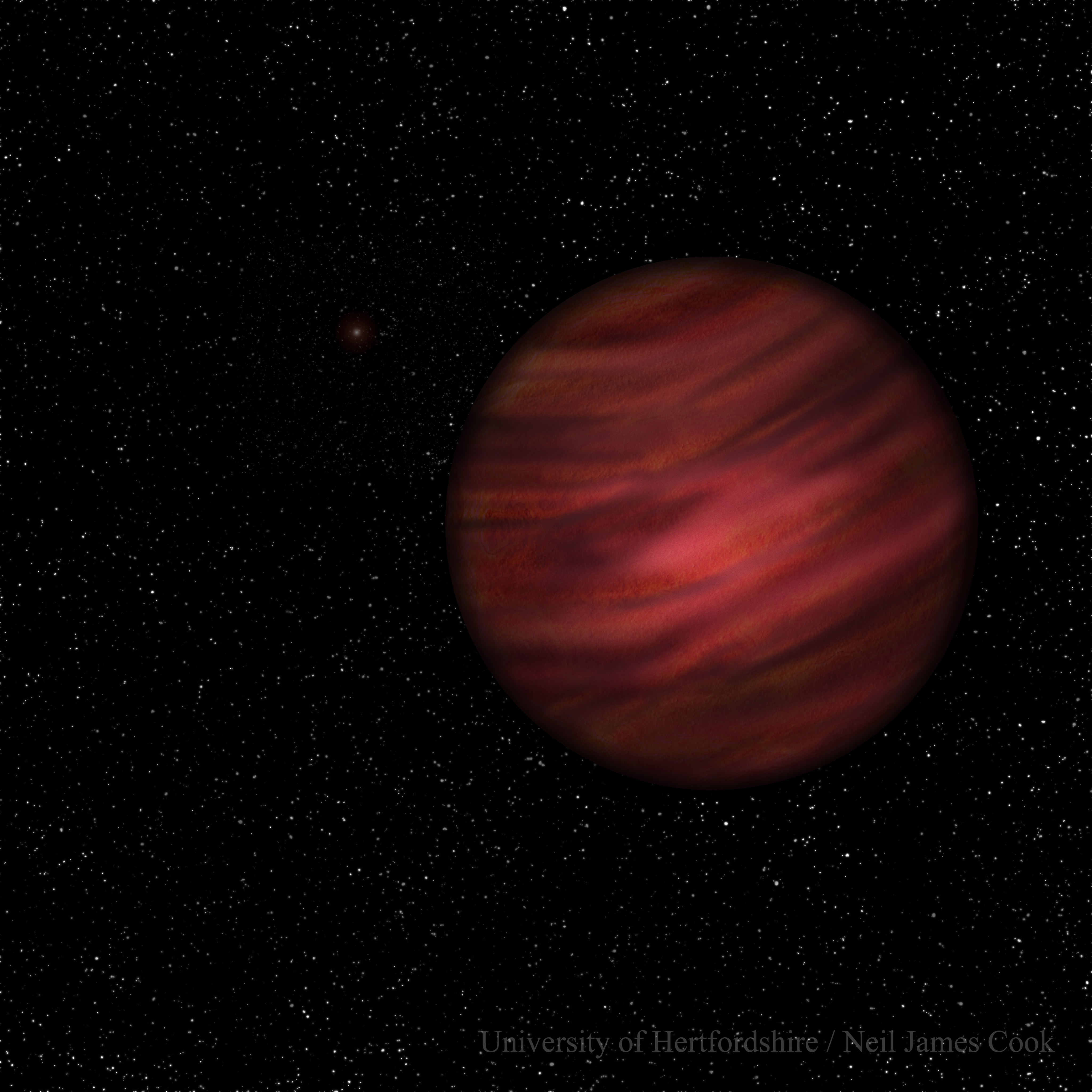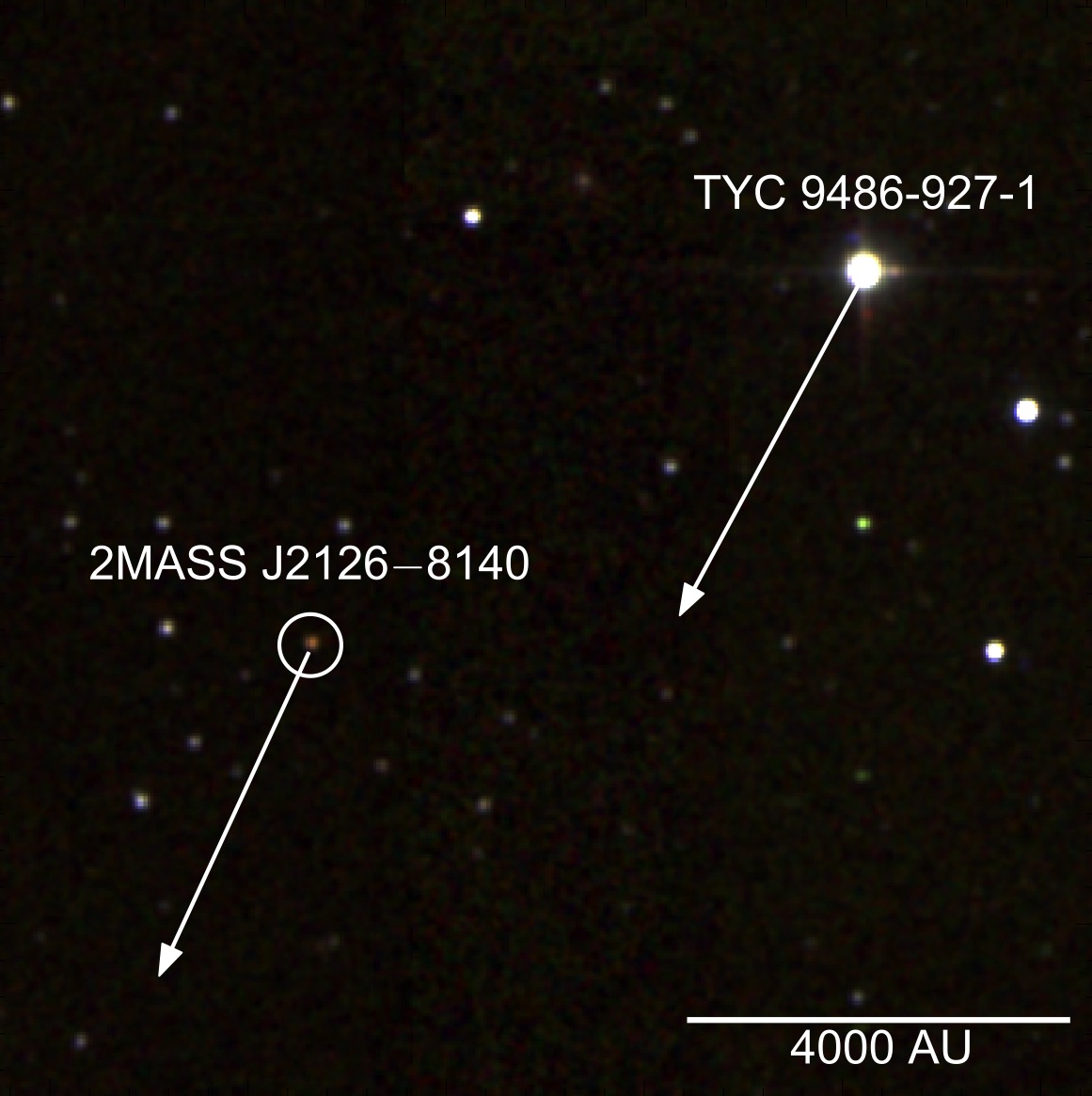
A huge alien world orbits 600 billion miles (1 trillion kilometers) from its host star, making its solar system the largest one known, a new study reports.
Astronomers have found the parent star for a gas-giant exoplanet named 2MASS J2126, which was previously thought to be a "rogue" world flying freely through space. The planet and its star are separated by about 7,000 astronomical units (AU), meaning the alien world completes one orbit every 900,000 years or so, researchers said. (One AU is the average distance from Earth to the sun — about 93 million miles, or 150 million km).
For comparison, Neptune lies about 30 AU from the sun, Pluto averages about 40 AU from Earth's star and scientists think the newly hypothesized "Planet Nine" never gets more than 600 to 1,200 AU away from the sun. [The Strangest Alien Planets (Gallery)]
"The planet is not quite as lonely as we first thought, but it’s certainly in a very long-distance relationship," study lead author Niall Deacon, of the University of Hertfordshire in England, said in a statement.
The previous record for most widely separated planet and star was 2,500 AU, researchers said.

Deacon and his colleagues analyzed databases of rogue planets, young stars and brown dwarfs — strange objects bigger than planets, but too small to ignite the internal fusion reactions that power stars — to see if they could link any of them together.
The team found that 2MASS J2126, which was discovered eight years ago, and a red dwarf star called TYC 9486-927-1 are moving through space together about 104 light-years from Earth, strongly implying that they're part of the same system.
Get the Space.com Newsletter
Breaking space news, the latest updates on rocket launches, skywatching events and more!
The researchers were able to deduce a rough age for TYC 9486-927-1 and 2MASS J2126, based on the lithium signature in the star's spectrum: between 10 million and 45 million years old. (Lithium is destroyed relatively early in a star's life, so the more lithium a star has, the younger it is.)
2MASS J2126 has therefore completed a maximum of 50 orbits around the star so far.
Knowledge of the planet's age allowed the researchers to calculate a mass for the planet: about 12 to 15 times that of Jupiter. Previous studies had estimated 2MASS J2126's temperature to be about 2,730 degrees Fahrenheit (1,500 degrees Celsius). The planet appears to be broadly similar in these characteristics to the alien world Beta Pictoris b — but 2MASS J2126 orbits more than 700 times farther from its star than Beta Pictoris b does, team members said.
The odds that life could exist on 2MASS J2126 are very low, researchers said. But a hypothetical observer on the gas giant would see its sun as merely a bright star in the sky, and might not even realize that the planet and star were connected, they added. (It takes light from TYC 9486-927-1 a month to get to the planet; sunlight takes about 8 minutes to get to Earth.)

The exotic planetary system probably did not form from a large spinning disk of dust and gas, the way that Earth's solar system did, study team members said. But exactly how it did take shape remains a mystery.
"How such a wide planetary system forms and survives remains an open question," co-author Simon Murphy, of the Australian National University in Canberra, said in the same statement.
The new study was just published in the Monthly Notices of the Royal Astronomical Society.
Follow Mike Wall on Twitter @michaeldwall and Google+. Follow us @Spacedotcom, Facebook or Google+. Originally published on Space.com.
Join our Space Forums to keep talking space on the latest missions, night sky and more! And if you have a news tip, correction or comment, let us know at: community@space.com.

Michael Wall is a Senior Space Writer with Space.com and joined the team in 2010. He primarily covers exoplanets, spaceflight and military space, but has been known to dabble in the space art beat. His book about the search for alien life, "Out There," was published on Nov. 13, 2018. Before becoming a science writer, Michael worked as a herpetologist and wildlife biologist. He has a Ph.D. in evolutionary biology from the University of Sydney, Australia, a bachelor's degree from the University of Arizona, and a graduate certificate in science writing from the University of California, Santa Cruz. To find out what his latest project is, you can follow Michael on Twitter.









